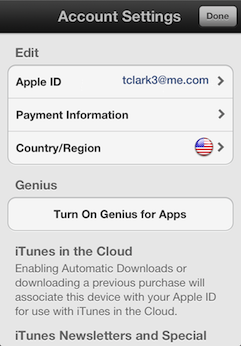Stack Overflow just announced a Portuguese version of their site. Apparently enough people didn’t understand the reasoning behind this that they had to put out a long blog post to explain:
Assumption: All of the serious developers in the world are highly proficient in English.
Which… actually sounds plausible. But it’s wrong.
Not every developer in the world speaks English.
It’s almost impossible to feel like part of a community if you’re not highly proficient in the language.
Requiring that all aspiring devs "just go learn English" first isn’t who we want to be.

Just the other day I wrote a post (link in Italian) about why Italian bloggers should blog in English to increase their audience. So I should be all up in arms against this move by Stack Overflow, right?
Actually, no. I think it’s a great idea.
Wait, what?
I definitely think that developers, bloggers, and generally anyone who wants to be a part of an international community should learn English. Note that this is not because everyone should move to Silicon Valley! I am quite happy living in Italy, thankyouverymuch. It’s just that English is the lingua franca of our days.
A step back: here’s the etymology for the original lingua franca (from Wikipedia):
The term "lingua franca" is from a particular example, Mediterranean Lingua Franca. Lingua Franca was a mixed language composed mostly (80%) of Italian with a broad vocabulary drawn from Old French, Greek, Arabic, Portuguese, Occitan and Spanish. It was in use throughout the eastern Mediterranean as the language of commerce and diplomacy in and around the Renaissance era. At that time, Italian speakers dominated seaborne commerce in the port cities of the Ottoman empire. Franca was the Italian word for Frankish. Its usage in the term lingua franca originated from its meaning in Arabic and Greek, dating from before the Crusades and during the Middle Ages, whereby all Western Europeans were called "Franks" or Faranji in Arabic and Phrankoi in Greek during the late Byzantine Period. The Douglas Harper Etymology Dictionary states that the term lingua franca was first recorded in English in the 1670s. An earlier example of the use of lingua franca in English appeared in 1632.
In other words, lingua franca was nobody’s first language, but it was used for communication between many different people who could not speak each others’ first languages. In a world in which commerce might require communication with people who spoke Italian, French, Greek, Turkish, Arabic, Hebrew, Ladino, Portuguese, Spanish, and any number of other languages, it was simply not practical for most people to learn every one of those languages.
This is exactly how it works with English today. If a Finn, a Swede, a Spaniard and a Chinese need to communicate, the odds are good that they will do it in English. Therefore, if you want to be a part of those conversations, you’d be better off learning at least some English.
But I thought you liked Stack Overflow launching in Portuguese!
Yes, yes I do.
There’s a difference between saying that a Portuguese-speaking developer should learn English in order to be part of a wider international community, and saying that all Portuguese speakers must learn English in order to learn how to develop. My hope (and, I imagine, the hope of the good people at Stack Overflow) is that many of those new developers will go on to join the bigger conversation on the English-language site.
On the other hand, they shouldn’t have to learn English just to get started. In particular, the SO blog post points out:
How old were you when you first realized you could type things on a keyboard and control machines? Great. Now, at that age, were you proficient enough in another language to have learned to code without any English?
There’s your answer. That’s why resources need to be available in local languages. Individuals should learn English eventually, but they should not be obliged to just to get started.
Image by Caroline Gutman via Unsplash




